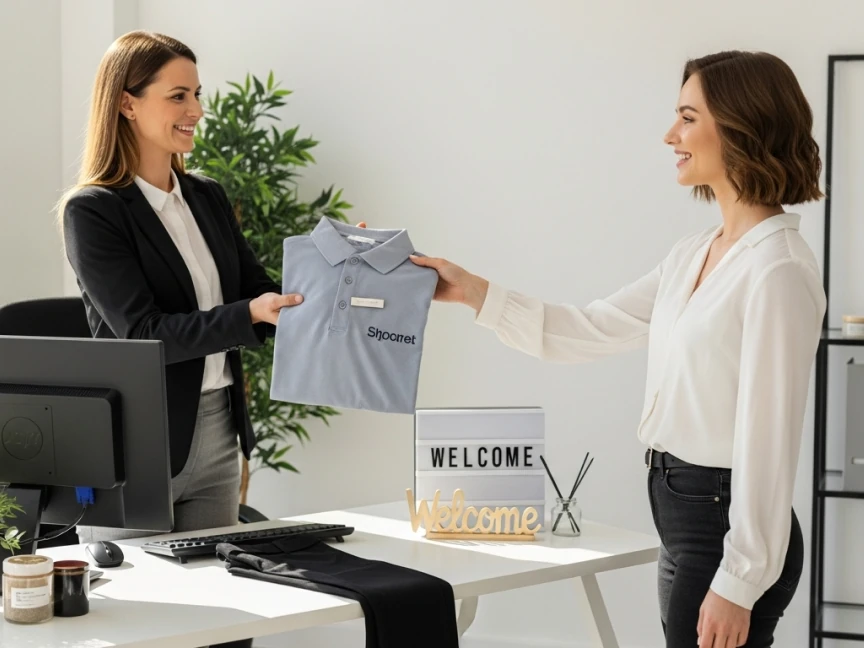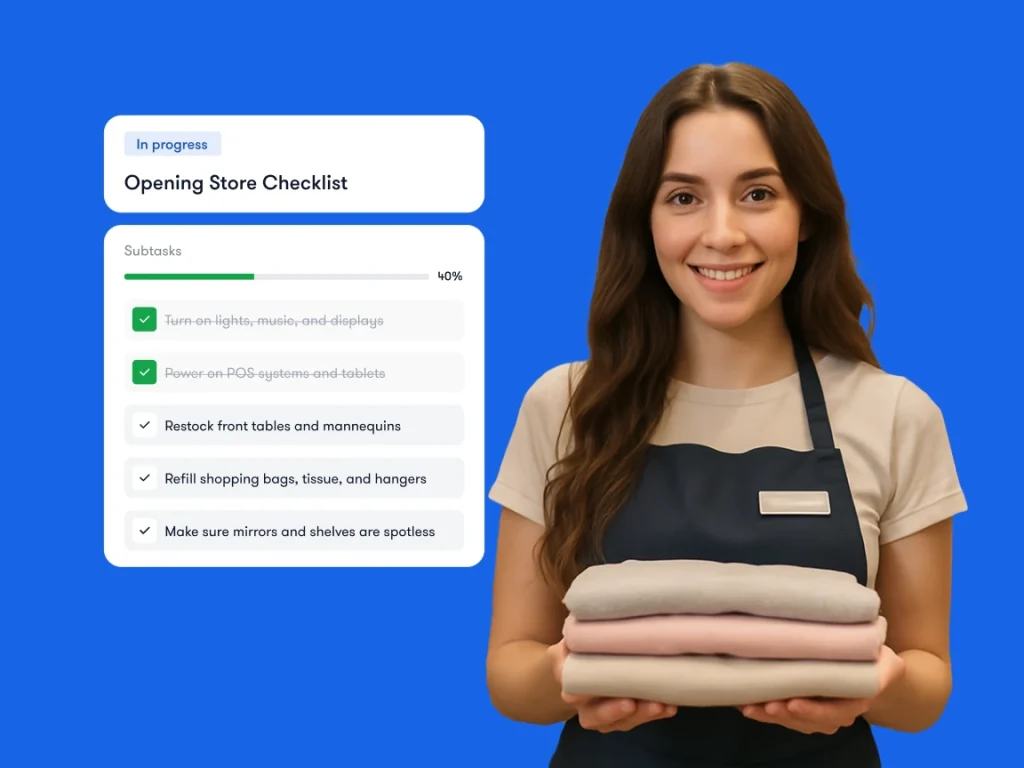Starting out in retail isn’t always smooth – the pace is quick, expectations are high, and not everyone can take the pressure. But there’s one thing that makes all the difference if you’re a retailer looking to build a solid team: having a clear, well-planned retail onboarding checklist. To put it in numbers: retailers who implement a structured onboarding process report 25% higher employee retention rates and 62% greater productivity from new hires compared to those who don’t.
Read: The Complete Guide to Retail Operations
Whether you’re managing a single store or a growing retail chain, this checklist will guide you through every step of onboarding to ensure new employees feel confident, engaged, and ready to contribute from day one.
In this blog, we’ll go through everything you need to have on your checklist, from pre-onboarding to SOPs.
Pre-Onboarding Essentials
Before Day One even arrives, there’s work to be done. Consider pre-onboarding as setting the stage for success – it saves time later since it ensures new employees feel welcomed and prepared from the very start. This phase is crucial because it reduces first-day confusion and helps new hires focus on learning and jumping into their role right away.
Complete paperwork: Send contracts, tax forms, and any legal documents for review and signature in advance.
Set up systems: Create accounts in scheduling, payroll, and communication tools.
Prepare uniforms and equipment: Make sure uniforms, name tags, and any tech like tablets or POS logins are ready.
Assign a buddy or mentor: Pair the new hire with an experienced employee to guide them during their first weeks.
Pre-boarding checklist:
Contracts signed
Payroll and scheduling accounts set
Uniforms and name tags prepared
Buddy assigned

Day One Tasks
First impressions matter, right? So, your goal at this stage is to make new hires feel welcomed, informed, and ready to start.
Store tour: Introduce the team and key areas like stockrooms, break rooms, and registers.
Company culture: Explain your mission, values, and customer service philosophy.
Safety briefing: Go over emergency procedures and health & safety protocols.
Technology setup: Issue POS credentials and walk them through basic operations.
Day one checklist:
Store tour completed
Company culture and values overview
Safety procedures reviewed
POS access issued and demonstrated

Week One Onboarding Tasks
The first week is all about learning the ropes and getting hands-on experience. It’s when new employees start moving from observing to doing, and that’s why it’s so important to provide as much support as they can get, as well as numerous practice opportunities.
Product training: Teach the basics of your products or services so employees can confidently assist customers.
Shadowing: Have new hires shadow experienced staff during different shifts.
Customer scenarios: Role-play common interactions, like returns or complaints.
Daily check-ins: Encourage open communication with managers or mentors to address questions or concerns.
Week one checklist:
Product knowledge sessions
Shadow shifts scheduled
Customer interaction role-plays
Manager/mentor daily check-ins

Training & Standard Operating Procedures (SOPs)
Once new hires have the basics down, it’s time to dive deeper with detailed training to ensure consistency and efficiency across your team. This step is key because it helps everyone follow the same processes, which means smoother operations and a better experience for customers.
Related read: 4 Real Life Examples of Retail Store Training Programs
Provide clear SOPs for inventory management, returns, opening and closing procedures.
Train on merchandising standards and store cleanliness.
Use digital training modules or printed materials for easy reference.
Training checklist:
SOP manuals provided
Inventory and returns process explained
Merchandising and cleanliness standards taught

Performance Check-ins and Development
Onboarding doesn’t end after the first week. In fact, that’s just the beginning. Once a new employee has settled into their role, regular check-ins and ongoing development are key to keeping them engaged, confident, and on the right track.
Schedule a feedback session at the end of the first week.
Conduct a 30-day review to assess performance and culture fit.
Discuss career development and training opportunities.
Follow-up checklist:
Week one feedback session
30-day performance review
Development goals set

Digital Tools to Streamline Retail Onboarding
Managing onboarding across multiple locations can get complicated fast. That’s where digital tools come in handy.
Solutions like Bitreport help you:
Centralize onboarding checklists and training materials
Track employee progress and performance
Manage scheduling
Keep communication clear between managers and new hires
Using tech not only saves time but ensures every employee gets the same great start, no matter the store.

Conclusion
A strong retail onboarding process is key to building a reliable, confident, and motivated team. With this retail onboarding checklist, you can make sure every new hire has a smooth and successful start, setting your store up for long-term success.





